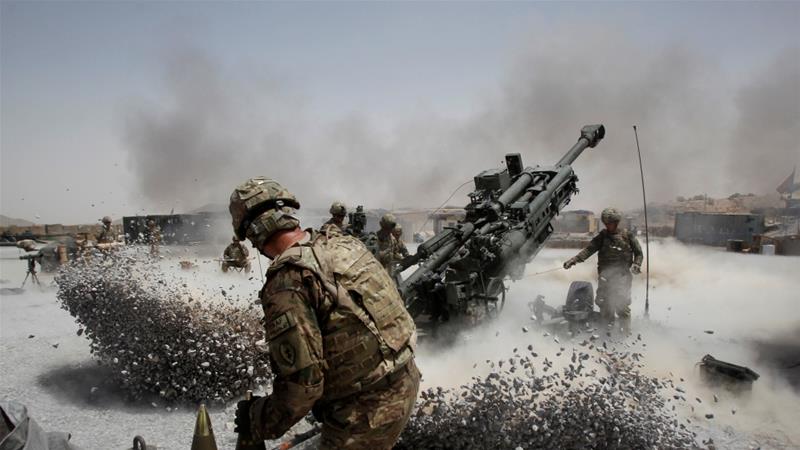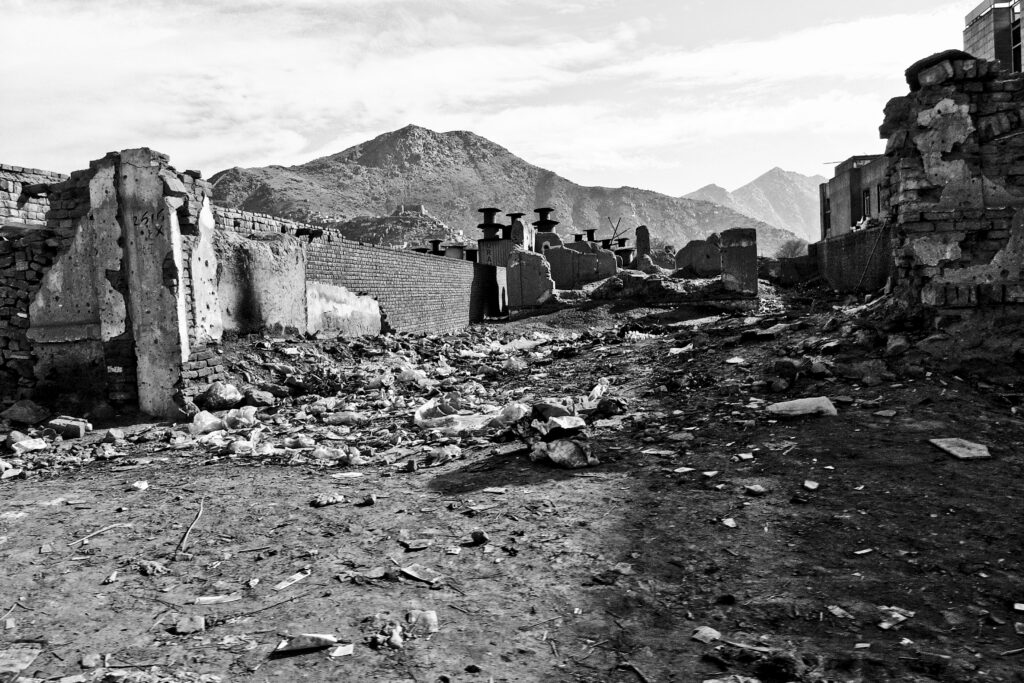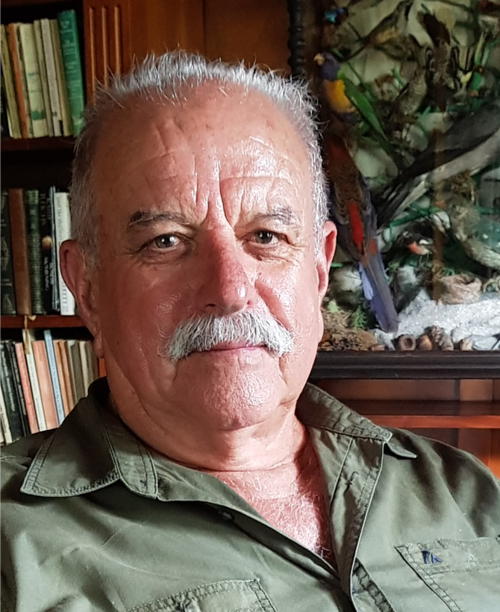By William De Maria with Pearls and Irritations
When Australian soldiers lifted their boots off Afghani ground for the last time in December 2013 the Koh-e Paghman mountains outside Kabul moaned for a nation broken once again by invasion. Up to 87,000 non-combatant Afghanis died in that most meaningless of wars, ground like mince between the wheels of geo-political savagery. Forty-one Australian soldiers came home in body bags to heroes welcomes when all their families wanted was resurrection. Of the 26,000 soldiers who survived Afghanistan, a large minority carried this brokenness back to Australia. Their own hearts and minds were to be the sites of multiple personal wars, to be replayed and replayed.
Tragically, some succumbed to the relief of suicide. Between 2001-2017 there were 419 documented suicides in serving, reservist and ex-Defence personnel. The adjusted rate of suicide in ex-serving male personnel was 18% higher than in the general male Australian population and ten times higher than the soldier deaths in Afghanistan. Exposure to trauma during deployment was rated as a significant risk factor for suicide.
How should we, particularly our young, process all this? That is a hard one because to answer it we must reckon with a troubling ideological potpourri of beliefs in the Australian community about the nature and causes of war. This ranges from widespread indifference (“best we forget”), entrenched militarism (“leave our warrior-heroes alone”) to genuine but “fluffy” Quaker type opposition to all wars. I will take the cowards route away from this question because it is much too big for the article here.
But as I duck out of this question, I take a parting glance at that great warrior of militarism, the Australian War Memorial (AWM). It has a disproportionate role in shaping our meaning of the war.
Every new battle, every new skirmish that happened in Afghanistan throws wood on the fire of contested meanings. Battlefield conduct is vulnerable to diverse interpretations. We see what we want to see; Australian Special Forces as reincarnated Anzac warriors stealthily advancing towards Afghanistan hot spots or bands of morally unhinged rogue shooters out hunting, or both.
One thing for sure, the hallowed Anzac narrative has no patience whatsoever for any stories of misconduct. The Australian flag is regularly thrown over smoldering accounts of war atrocities like a fire blanket. There is only one flame allowed to burn, the one that flickers in war memorials. It is as if Australian flags, dipped in Asbestos, have been distributed to many people and organisations with an ideological interest in keeping the Anzac candle as the only flame worth protecting.
To be a bit sardonic, Australian armed services command has a shed full of these fire blanket flags for ready distribution. So too does the overly influential Returned Soldiers League. The ratbag right run screaming through the twitterverse to the next ideological hot spot with these “blankets” draped around their shoulders. This rag tagged keyboard cavalry are particularly busy now defending Ben Roberts-Smith, the soldier who won a Victoria Cross. War jockeys of the political right, such as former Prime Ministers, Tony Abbott, and John Howard, have their own monogrammed fire blankets.
Every time we think we are advancing our understandings of Australia’ troubled military engagements we trip over this Anzac sacredness. It is always there. Always in the way. The obvious place to start a conversation as to how Anzac sacredness acts as a foil to battlefield truth is to visit one of the largest accountability-free zones in the country, the Australian War Memorial.

As I write, the Australian War Memorial (AWM) is open for business after it’s Covid closure. War curious visitors will once again buzz around the exhibitions that have been carefully manicured to represent all that is supposed to be great in the Australian identity.
The AWM is the principal warden of the Anzac flame. Its job is to tell the story of war. With world class curation (and lots of dollars) it honours the valour of Australian men and women who have fought for our country. What it does not get right is to explain the nature of war and why we so readily take up arms against “threats” on the other side of the world. There is no critical examination of the pointlessness of so many aggressive engagements Australia has been involved in and how shameful things can be done by Australians soldiers on the battlefield. The Australian War Memorial unapologetically distorts history and insists that its visitor go away with only one version of war. A version bound to enshrine war as a permanent inevitability.
Distortion of war history was very much the spirit of the speeches at the opening of the permanent exhibition, Afghanistan. The Australian Story. Prime Minister Rudd, one month away from losing the election to Tony Abbott, said, “I am honoured to be present today at the opening of the [exhibition]. The core message…is the absolute importance of telling the story.” Rudd, foolish Rudd, thought there was only one story. There are many stories, as I show in the following account of the “two prosthetic legs”. Many, many stories, but only a selected few get through the Memorial’s micron filters.
“Our” war in Afghanistan only finished seven years ago. Yet the War Memorial has already mounted two exhibitions about this failed engagement. Afghanistan. The Australian Story started in 2013 (thank you Boeing Defence Australia) and From the Shadows. Australian Special Forces, which went from October 2017 to September 2018.
The former exhibition started before the final pull out. Why do that? Why bring on exhibitions when memories are still raw and liable to imprecision and before the histories (pro and against) are written, and certainly before the Brereton Inquiry into alleged war crimes in Afghanistan has concluded? The answer is quite simple, and one straight from Joseph Goebbels’s propaganda notebook.
The objective is to select a message of war, groom it, and broadcast it. At the same time isolating or ignoring contrary messages. The heavily militarised AWM Council and senior staff know it is all about achieving mastery over the message and then to repeat that message with all the curatorial firepower at the Memorial’s disposal, and with a little help from their friends, the international arms makers. Achieving mastery over the message allows the War Memorial to drape that message over the battles and countless skirmishes in Afghanistan. The endurance of the mediated message is not to be underestimated. It lasts long after the smoke has left the battlefield. Long after the last dead soldier has been buried and long after the last widow has shed the last tear.
Even the title is a dead giveaway to the propaganda intent here. The Australian War Memorial could never mount an exhibition called Afghanistan. An Australian Story. Why? Because that broadcasts a strong inference that there is more than one way to tell the story of Afghanistan. While that is obviously correct. It is dangerous heresy to the Memorial’s war culture.
This message manipulation was clearly at play in the other exhibition From the Shadows. Australian Special Forces. The 340,000 visitors to that display saw a lot of trigger pulling, a lot of people jumping out of helicopters into the stirred-up dust and lots of back shots of soldiers. No insights were offered to help a third of a million visitors understand why the soldiers were there in the first place. Certainly, no explanations about the war crimes committed.
And it is on that point that the Australian War Memorial should be held morally culpable. Because by the time this exhibition was mounted, stories about Special Forces behaving badly in Afghanistan had been circulating for eight years. By the opening of the exhibition these stories had gone from rumours to credible evidence. Yet the AWM curated this propaganda showpiece wilfully oblivious to the evidence, so all the 340,000 visitors got was a classy Defence recruiting add. By panel beating our Afghanistan war into a preferred shape the Australian War Memorial pillages history and lets us all down.

In both exhibitions the reality of a disastrous Afghanistan mission has been replaced by a spectacular diorama of denial. The curators took the truth, a white sheet of paper, and folded, creased, and turned it into an origami piece with great propaganda value. In these exhibitions we win the war. Failure was never going to be a curation parameter. The exhibitions are more heroic then reverential. More dick swinging and shouting then silent contemplation. More testosterone than estrogen. More suited to entertainment then reflection. From expedition to exhibition. If the war cannot be won on the ground surely it can be won through film clips, sound recordings, video interviews and flashy story boards.
Visitors to the Afghanistan: The Australian Story exhibition are offered a theme park experience. Symbols, slogans, and sensations. Hop on an emotional rollercoaster and spin round corners to vicariously witness an ambush. Let the roller coaster take you to heights where you see smiling Afghani children taking lollies from soldiers. Let it whiz you past the awesome killing technologies. Block your ears to the rat, tat, tat of an F88 Austeyr assault rifle. Hold your breath as a Special Forces soldier takes position with his SR98 sniper rifle. Eyes wide open as a Special Forces soldier readies for a mission by strapping on a 9mm Heckler & Koch pistol. Just enough time before heading to the cafeteria to hop in a simulation ride in a U-60 Black Hawk helicopter. After lunch visit the Hall of Valour and see the Victoria Crosses awarded to Mark Donaldson, Daniel Keighan, Ben Roberts-Smith, and Cameron Baird (posthumous) and read accounts of their bravery in Afghanistan.
One quick visit to the AWM shop to pack your sample bag with a DVD box set The Australian SAS. The Untold Story ($89.99); a camouflage print cap ($14.99), and finally, a cuddly Afghanistan Desert teddy bear, standing 42 cm in a presentation box. A war bear! Can you imagine? It one of a 100 limited edition bears. What a steal at $225. The bear comes with a certificate that says:
Your limited-edition Desert Bear wears the Australian multicam pattern camouflage uniform developed for desert areas and is representative of the clothing worn by ADF personnel in Iraq and Afghanistan circa 2014-2018. The detailing of your bear has been authenticated by the Australian War Memorial.
Just before heading to the carpark we check out the prosthetic limb worn by Sapper Curtis “Kiwi” McGrath who lost both legs in an IED blast on 23 August 2012 in the terrifying Uruzgan Province. When he was wounded, McGrath joked with medics about becoming a Paralympian – four years later he won gold in the K3 canoe sprint event at the Rio Paralympic Games.
That is quite a story. But there is another story. There is another prosthetic limb from Afghanistan. We wonder where it is on display. AWM staff do not know what we are talking about. But it exists. Federal Court documents allege that an unarmed Afghani with a prosthetic leg was shot during an operation in the village of Kakarak, in Afghanistan’s deadly Uruzgan Province, in April 2009. At least three former soldiers have reportedly agreed to testify that a Special Forces soldier executed the man by throwing him on the ground and shooting him 10-15 times.

It is further alleged that another soldier retrieved the dead Afghan’s prosthetic leg and brought it back to the Tarin Kot base. As a gruesome war trophy, the prosthetic leg was brought back to SAS regimental headquarters, Campbell Barracks in Swanbourne Perth. There it was mounted and framed and used as a prop in photographs and used as a beer drinking vessel by members of the troop.
Two prosthetic legs. One a symbol of bravery, the other a symbol of a sub-human act. Only one prosthetic leg will ever be seen by the visitors to the Australian War Memorial. Only one story gets out. Alan Stephens, a former RAAF pilot, who visited this exhibition said:
Every year, hundreds of thousands of Australians gain their basic understanding of war from visiting the Australian War Memorial. Regrettably, by telling them only half the story, the Memorial is failing in its responsibility.
Music, literature, oral histories, poetry, and the sound of war machines are also offered for sale in the AWM as long as they complement the glorification of victory and do not write or sing the praises of failure. You can buy David Horners’ In Action with the SAS, but you cannot purchase Coburn’s Losing Afghanistan: An Obituary for the Intervention. Shoppers can purchase Ramage & McPhedran’s saccharine Afghanistan: Australia’s war, a photographic story of the nation’s longest war and those who served. but they cannot get Jones’s In the Graveyard of Empires or Anand Gopal Pulitzer Prize nomination No Good Men among the Living. America, the Taliban, and War through Afghan Eyes.
The same censorship applies to music. Visitors to the War Memorial can purchase After the War, a collection of war songs from Gallipoli to Afghanistan, but they cannot purchase the music from the bustling anti-war genre such as the recently released The Outpost. The Outpost joins a large group of anti-war movies such as All Quite on the Western Front, Apocalypse Now, Catch 22, The Deer Hunter, Full Metal Jacket, Hacksaw Ridge, and Platoon, all exposing the hubris and incompetence of military leaders. Don’t expect to see these DVDs in the AWM shop anytime soon.
Many veterans have shared their experiences with the Brereton Inquiry into atrocities in Afghanistan. The question is, will the curators hold to their promise to change the exhibition “as more veterans share their stories”? I think we know what would happen if a witness to the atrocities asked the Memorial to include his story in the exhibition. Or if a SAS soldier asked for the prosthetic leg from Kakarak to be added to the exhibition. So, what are we left with? A fragile cloth of history that has the wefts of bravery but not the warps of misconduct.
As we approach the 20th anniversary of our war in Afghanistan we must start talking.
About the Author:

Bill De Maria had a controversial thirty three year career in the Department of Social Work and Social Policy at the University of Queensland. He has also been a tireless social activist and was responsible for establishing the Brisbane Welfare Rights Centre and the Queensland Whistleblowers’ Action Group.
Deadly Disclosures: Whistleblowing and the Ethical Meltdown of Australia and Trouble in the Land of Giving: Australian Charities, Fraud and the State.
His next book, Australia’s War of Shame: Afghanistan 2001-2013, is due out in 2021, the 20th anniversary of the occupation of Afghanistan year.
This story was originally published in Pearls and Irritations and is reproduced here with their kind permission.



2 Pingbacks